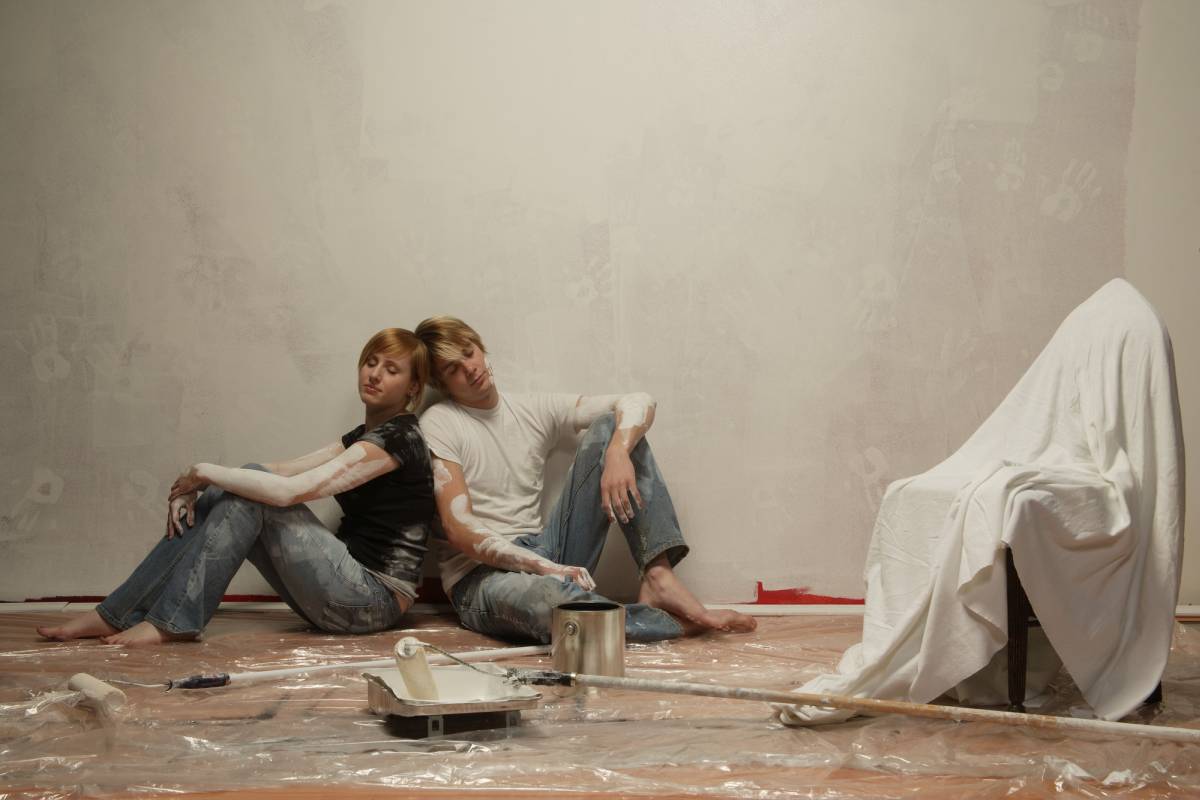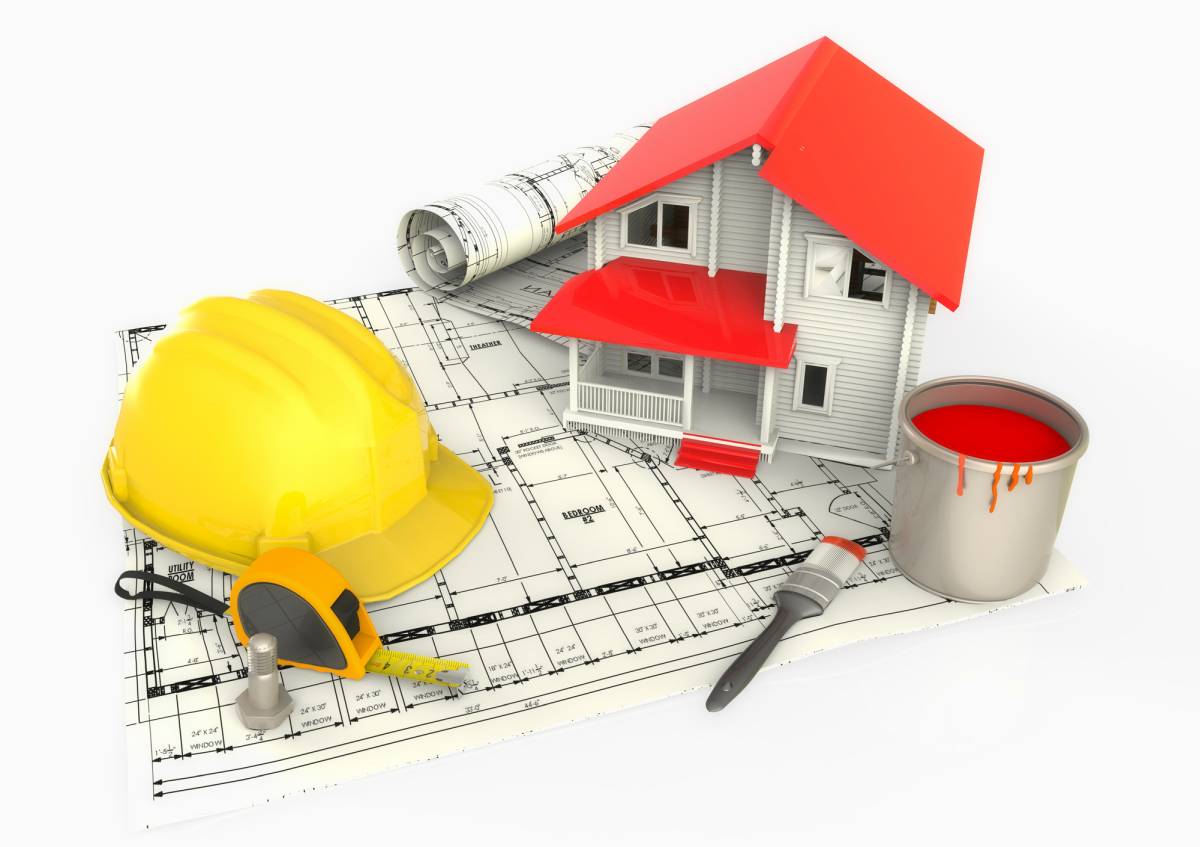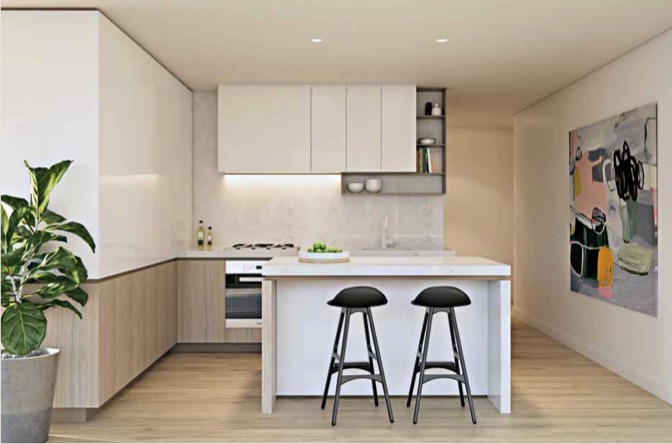Are you feeling inspired to take a run-down wreck and make it new again?
It all looks so glamorous and straightforward, with random 'beautiful people' tucking their perfectly styled hair into oddly flattering hardhats.
But the reality of a large-scale renovation project is very different from the 'TV reality.'
Renovating your home is a huge task that requires a serious amount of attention paid to all the details. But, if you set yourself up correctly with a clear plan in mind, you can spare yourself some of the headaches.
Whether you're planning a quickie DIY bathroom reno or inviting an army of tradies into your home, here are the most important things to think about before you renovate.
Decide what you want out of your renovation.
Are you renovating to flip or are your intentions more long-term? It's important to know what you want to achieve with your renovation and why. If you're renovating to avoid moving, the work you do now should still service your needs in a few years. Think about how many bedrooms and bathrooms and how much living space you'll need in the future, particularly if you have a growing family.
Improving your own home to enhance its liveability for your family will generally entail a very different approach than fixing up a rental property.
In the former instance, it's about comfort more than cost and compromise.
Of course, you don't want to over-capitalize, but it's not as critical that you have a significant financial margin between what you spend and what you stand to make.
However, if the plan is to grow your rental yield and increase the equity in your property, you must focus on the financial considerations first and foremost.
The process must be based on hard facts and logic rather than emotion.
Before you start stalking kitchen showrooms, figure out what you want out of your renovation. Let the big picture guide your decisions along the way.
Homeowners planning to stay somewhere long-term might consider premium materials, to make life more comfortable.
Those planning a quick sale should aim to make the home attractive to the broadest range of potential buyers, without breaking the bank.
Even if you're not planning on selling your home immediately, still consider how a reno could increase its value. A good rule of thumb is to spend around 10 percent of the value of your home on a kitchen reno and approximately five percent on a bathroom reno.
Good-quality, neutral-toned benchtops and splashbacks such as concrete or Caesarstone appeal to buyers. Under-cabinet lighting makes kitchens look expensive. High or mid-range appliances, particularly in stainless steel, add value to a property. And storage is valued by buyers.
Good-quality materials will extend the life span of your home and could also save you money in the long run. Think about factors such as environmental impact, structural capability, thermal performance, sound insulation and fire, vermin and moisture resistance. Lightweight framed construction (using steel and timber) is Australia's most popular construction system and can boost the environmental performance of a home. Many people recycle materials from an old part of their house.
Do you have the necessary knowledge?
Maybe you've spruced up your own home and feel confident taking on a project that's all about the profitability.
But one DIY job does not the expert make.
If renovations were so easy to cash in on, why do so many people walk away no better off at the end of a very exhausting and stressful experience?
Firstly, you need to be aware of which jobs you plan on undertaking, if any, require council permits, and how to go about the application process with your local government authority.
Then there's due diligence to measure the project's viability, risk assessment and mitigation, time and cost management and contingency planning, coordinating tradespeople and various building processes to work through.
Engaging a suitably qualified builder or project manager to oversee your renovations is advisable.
If you prefer to get your own hands dirty, I'd recommend engaging an appropriately qualified professional for the first few small scale developments to give you some much needed 'on the job' guidance, before attempting to go it alone.

Realistically assess your budget.
Understatement of the day: renovating is expensive.
Be realistic about how much you can afford. Get quotes in writing from at least three builders and be clear about what these do or don't include. You can expect to pay around 45-50 percent of the cost of materials, 30-35 percent on labour and 20-25 percent on fees, taxes, GST and levies. Remember to include additional charges such as storage and council permits.
It's good to know whether you're biting off more than you can chew. And whether it's worth chewing even harder.
Obtaining an estimate of costs from a builder or quantity surveyor before making any big decisions.
Research finance options to ensure the renovation is as cost-effective as possible. And don't underestimate the pressure a huge mortgage can place on family life, especially with young children.
If you're short on cash, talk to your bank or financial advisor about extending your current home loan, refinancing your mortgage or getting a construction loan. You can also contact Archicentre Australia for its Cost Guide on materials.
Even if you've hired a project manager, you'll still need to keep track of costs and timelines. Keep invoices, receipts, contracts and plans safe and organized, and make notes in your calendar about deadlines you need to meet so the project will run smoothly.
If you're managing the project yourself, write a diary of what's happened on-site each day. This helps ensure the renovation is on track and also gives you specific dates to refer to if problems arise with tradespeople or deliveries.
Unforeseen delays, hidden costs and shoddy work can all happen during a renovation. Build a 15-20 percent buffer into your budget to cover unexpected expenses. Before starting work, talk to your home and contents insurer. Many have exclusions for water damage during a renovation, and some will suspend cover if your home isn't adequately secured. Ask your builder if their insurance covers the whole building or just the part they're working on. If you have an issue with a contractor, tell them in writing what your concerns are and explain how you'd like the problem fixed.
Obtaining the necessary finance
This should be at the top of the list, because obviously if you can't get the finance you need first to purchase and then improve the property you have in mind, everything else is a moot point.
Ideally, you'll be able to use existing equity in a property investment that you've held in your portfolio for a little while before deciding to carry out improvements, rather than digging into your pocket.
To this end, I like to purchase dwellings that are liveable as is but will generate a better rental income and attract stronger capital growth with a few cosmetic tweaks as time and finances allow.
Just be aware that if your project becomes a more significant scale undertaking and you need to seek additional funding from your lender, you may have to do a bit of debt restructuring to make the figures work.
What's your Motivation?
If your renovation is motivated by increasing the value in your property, talk to a local real estate agent. Ask what sort of features are sought after in the area and what you could do to improve your home. If you're restoring an old property to give it a new lease of life, remember that these often hide major structural issues. Allocate a good portion of your budget for any surprises that might be unearthed.
Consult the experts
If you're planning a DIY renovation, contact your local council to learn about any relevant regulations.
For bigger jobs, it's essential to ensure your house can support the work you have in mind. Experienced builders and qualified building inspectors can advise on this.
If you're engaging a builder, they should be able to guide you through the council process to get planning and building approvals in place. Don't forget to check their references or view examples of their work.
Don't speculate on the approvals you'll need. Find out for sure by contacting your local council, state planning authority or a consultant town planner.
If you need help with the design of your home or are working with a challenging building, architects can save time and money. Expect to spend around 10 percent of your budget on their fees.
If this isn't the case, a draftsperson or building designer can draw up your plans, but make sure the drawings comply with building and planning regulations. Check the credentials of anyone you hire through your state architecture board or your local building authority. Many builders will also project-manage works, so when you ask for quotes, ask whether this service is included or if you're expected to do it yourself or hire a separate project manager.
An interior designer will make sure your home looks flawless, but they can be pricey. If you're on a budget and are willing to trawl the shops (and the web) to find the materials you're looking for, an interior designer might not be an essential part of your renovation.
Architects traditionally act as project managers. You can also engage the services of a specialist project manager if you're not going to oversee it yourself.

What about Tradespeople?
What makes a good tradesperson?
You need to answer this question before you even start scouring the Yellow Pages for the professionals you'll require on-site.
Quality workmanship at a reasonable price is the first thing that comes to mind, but availability and reliability are just as important.
Some of the ways you can source good people for your project team include:
- Referrals from friends or colleagues
- Ask at your local hardware store – they'll often have ongoing relationships with tradespeople and come to know who's more reliable
- Stop at nearby worksites and ask for business cards
- Chances are you'll end up working closely with the various tradespeople you employ, so make sure you can sustain a good relationship and effective communication with them.
Who's going to live there?
The number of adults and children who will live in the house, and how long you plan to stay there, affect decisions about how many bedrooms and bathrooms you'll need. If you're considering adding two or more bedrooms, think carefully about whether you'll be overcapitalizing. Some experts believe you shouldn't spend more than 10 percent of your home's value on a renovation, but if you're planning to live in the house for ten years or more, this may mean overcapitalizing in the short-term.
How do you find 'the one'?
I'm talking about the property that presents with ideal development potential to realize a beneficial return.house property
To recognize a 'renovator's delight,' you need first to determine what type of profit it might deliver.
Ideally, you should aim to achieve $2 in added value for every $1 spent on cosmetic improvements.
You don't want to overcapitalize by paying too much for the dwelling before you even get cracking on the Renos, so it's critical to know the location and get a good handle on comparable values.
Consulting local real estate agents to find out what buyers and tenants expect from the property in the area is advisable to determine if the investment you're considering will deliver a profit.
How much time can you spare?
If, like many Australians, you work upwards of 50 hours per week, can you expect to take on a significant renovation project all by yourself?
To complete refurbishment on time and to budget, the reality requires someone to be on-site to direct proceedings and make sure things run as smoothly as possible.
If you can't commit the necessary hours and days, employ a qualified project manager.
Although their fees may add another ten or so to your overall renovation costs, it likely to be a worthwhile investment.
Remember, the longer it takes to complete the renovations on your asset, the longer it will take to start generating that all-important cash flow from your rental property.
Furthermore, failing to schedule the appropriate trades at the right times and working toward a well thought out schedule often means lost opportunity.
In other words, while one project drags on indefinitely, you are potentially missing out on other investments that could see you grow your portfolio sooner.

Get the timing right.
Delays can be infuriating and costly. That's why it pays to think about timing before you revamp your home.
Ideally, you don't want your shiny new floorboards installed before the cabinetry. Or your Caesarstone bench put in before the new ceiling is in place.
Also, decide whether you need to move out while the work is underway – especially if the bathroom is going to be out of action for a while.
Picture all the elements of a room before you start
If you're going to shell out big bucks on a renovation, you want it to look fabulous.
That means deciding from the outset how you want each space to look. An interior designer or decorator can help. They will take you through a process to draw out your style and bring it to life, giving you guidance along the way.
This includes working to a budget, using drawings, mood boards and samples to craft the look you want.
If you're going it alone, scour magazines, books and blogs for inspiration. Start a file or board on Pinterest to store your favourite images. Look for recurring trends in your selections. Pick one or two essential items and build your design choices around them.
What to do with the end product?
Some property investors seem to have made a reasonably good living from becoming professional project managers and adopting a buy, renovate and sell strategy.
I often wonder, though, how much long term wealth could their investment have generated if they retained it as a high growth rental?
For my money, the buy, renovate and hold approach makes a lot more sense and allows you to use any additional equity manufactured from all that hard work to invest in other high growth assets and further nurture your nest egg.
Whatever strategy you adopt when considering a renovation project, it must align with and complement your overall investment objectives.
Onwards and upwards!

